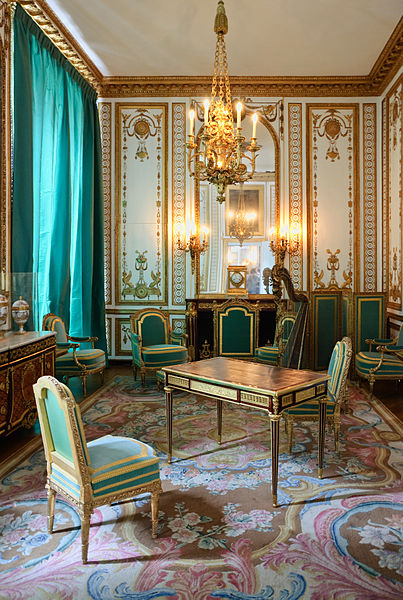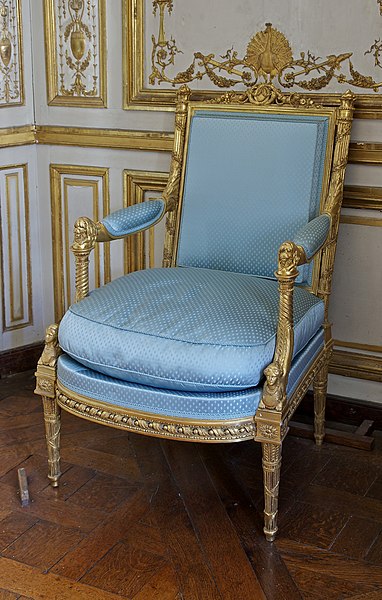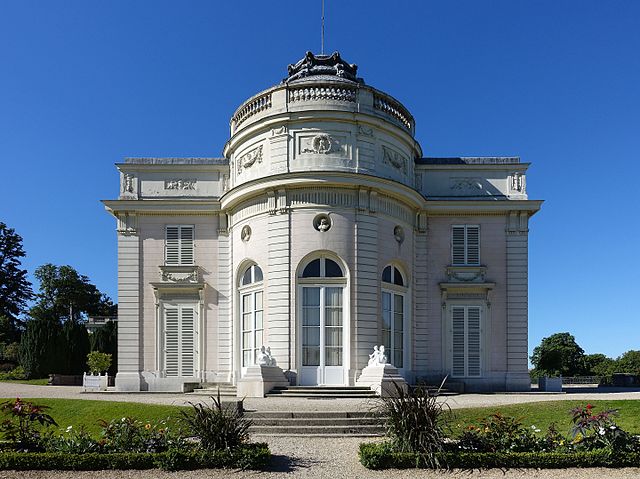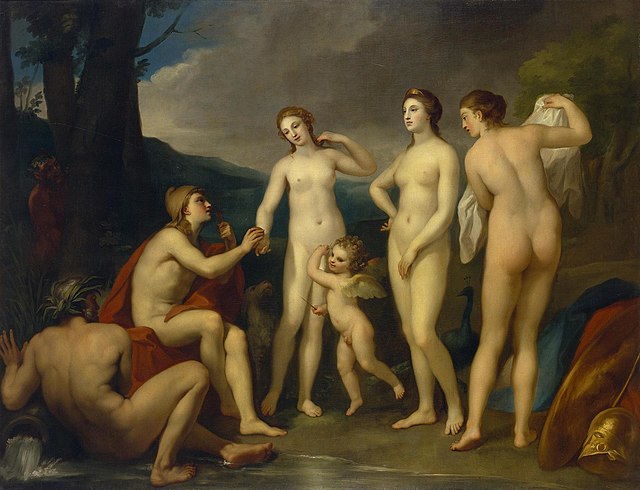Louis XVI style, also called Louis Seize, is a style of architecture, furniture, decoration and art which developed in France during the 19-year reign of Louis XVI (1774–1792), just before the French Revolution. It saw the final phase of the Baroque style as well as the birth of French Neoclassicism. The style was a reaction against the elaborate ornament of the preceding Baroque period. It was inspired in part by the discoveries of Ancient Roman paintings, sculpture and architecture in Herculaneum and Pompeii. Its features included the straight column, the simplicity of the post-and-lintel, the architrave of the Greek temple. It also expressed the Rousseau-inspired values of returning to nature and the view of nature as an idealized and wild but still orderly and inherently worthy model for the arts to follow.
Image: Cabinet dore Marie Antoinette Versailles
Image: Fauteuil Jacob cabinet méridienne Versailles
Image: Château de Bagatelle, Paris 17 July 2016 004
Image: Jean henri riesener, angoliera, 1785 ca
Neoclassicism, also spelled Neo-classicism, emerged as a Western cultural movement in the decorative and visual arts, literature, theatre, music, and architecture that drew inspiration from the art and culture of classical antiquity. Neoclassicism was born in Rome, largely due to the writings of Johann Joachim Winckelmann during the rediscovery of Pompeii and Herculaneum. Its popularity expanded throughout Europe as a generation of European art students finished their Grand Tour and returned from Italy to their home countries with newly rediscovered Greco-Roman ideals. The main Neoclassical movement coincided with the 18th-century Age of Enlightenment, and continued into the early 19th century, eventually competing with Romanticism. In architecture, the style endured throughout the 19th, 20th, and into the 21st century.
Psyche Revived by Cupid's Kiss; by Antonio Canova; 1787; marble; 155 cm × 168 cm; Louvre
Charles Towneley in his sculpture gallery; by Johann Zoffany; 1782; oil on canvas; height: 127 cm, width: 102 cm; Towneley Hall Art Gallery and Museum, Burnley, UK
Johann Joachim Winckelmann, often called "the father of archaeology"
Anton Raphael Mengs; Judgement of Paris; circa 1757; oil on canvas; height: 226 cm, width: 295 cm, bought by Catherine the Great from the studio; Hermitage Museum, Saint Petersburg, Russia








